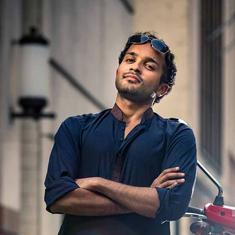This isn’t literature
The tears start when the hopeful pedagogue takes that question to its next logical step and asks, “So, what is it that you read?” Some mention Harry Potter. Which is a relief. A handful have read and can quote from graphic novels. Some still name the vapid Vampire fiction by Stephenie Meyer.
Which also makes sense. We get the appeal of the eternal love triangle, conflict, so on and so forth. And then there are the cheerful cries of “Chetan Bhagat!” “The Alchemist!” And horror of horrors, Amish. Amish, of the ridiculously retold Ramayana. Chetan Bhagat, who judges reality shows with as much flair as his writing has. That’s who these students-to-be have read and have termed “Literature” and brought into a classroom. That is when the deluge starts.
The problem is neither Chetan Bhagat nor Amish. One strings sentences together to tell a uni-dimensional story, full of stereotypes, ready to be converted into yet another piece of Bollywood fluff, complete with inane song and dance routines. The other has just butchered the Ramayana and shamelessly exploited the Delhi gangrape case to add topicality.
Both could take pointers in story-telling from India’s new breed of writers: Anees Salim, Anuradha Roy, Amit Chaudhuri, among others. That mythologies can be re-written and re-written well is already obvious in the works of Devdutt Pattanaik and Ashok Banker. But let’s not go there. Let the world consume the inept literary endeavours of Mr Bhagat and his ilk. Only, let us not make the mistake of calling any of it “literature”. Let us not assign to them the value of being the reason why a sixteen-year old wants to read Literature(s).
Visit a library
It is a little surprising that in a world that has Kindle and Amazon and Flipkart and Infibeam, high-schoolers are still short of things to read. We are, obviously, discounting the school library.
When conversations with friends happen over WhatsApp and whatever chat engine is the flavour of the month, no one except an overly-optimistic Language/ Literature teacher expects students to actually check out books from a real-time, steel-shelved, often dark, and complexly-organised library.
If she/he only stepped inside, our precocious teen might just discover the joy of a leather-bound, yellow-paged, slightly musty-smelling Classic. Jane Austen, who has provided the plot for an unusually large number of Hollywood romances. Charles Dickens, who is equal parts funny and realistic and dramatic. Or even a paperback.
Many a library has been an initiation to the amusing fastidiousness of a Hercule Poirot or the eccentricity and astuteness of a Miss Marple. Sheer numbers, the possibility of devouring shelf after shelf of Agatha Christie, or, to jump to an entirely different genre, Stephen King (-of-horror), would be motivation enough, one could be forgiven for imagining. But, no. Let’s get back to the Kindle. And stay there, foraging for bargains at least as satisfying as those in the narrow streets of Sarojini Nagar Market.
A reading list
It is staggering, the variety of books available to the Young Adult today. There are the usual fantasies – the iconic Harry Potter or Eoin Colfer’s surprisingly smart Artemis Fowl series, or even the only slightly dodgy Percy Jackson books by Rick Riordan. There is a plethora of bad and worse Vampire fiction. Ever since The Hunger Games, dystopian fiction has been ruling the charts. There is now Veronica Roth’s Divergent and M.T. Anderson’s Feed.
The romance seekers have it made with John Green’s prolific writing. There is the classic coming-of-age story in Stephen Chbosky’s The Perks of Being a Wallflower. Sadly, Young Adult Fiction is a space that remains largely unexplored by Indian publishers. There is no more Satyajit Ray writing the Feluda stories or R. K. Narayan creating friends for Swami. Instead, the space for YA is being filled with “Metro Romances” that have neither style nor substance. Pity and then some.
Which is why it makes so much sense for the Indian teen to graduate right on to non-ageist popular as well as literary fiction from India and across the world. Samit Basu’s brilliant Gameworld Trilogy is a great place to begin.
Science-fiction and fantasy, such a huge part of pop culture today, are easily accessed in the writings of Terry Pratchett and Neil Gaiman. Pratchett’s Discworld is easily one of the funniest takes on politics, religion and life in general, as relevant to a sixteen year old as to a middle-aged hag (to somewhat loosely borrow from Pratchett himself).
If crime and murder are more your forte, there is the ever-reliable PD James. I wouldn't go so far as to actually recommend Chuck Palahniuk, owing to his “rude” language but a transition to adulthood would be incomplete without at least one exposure to what Palahniuk himself has called transgressional fiction.
If, after this gentle nudge in the direction of how-to-impress-your-college-teacher, the next aspirant to English Honours tells me that they’ve only ever read Durjoy Datta, I will have earned the right to sit down and cry myself into a delirium.










